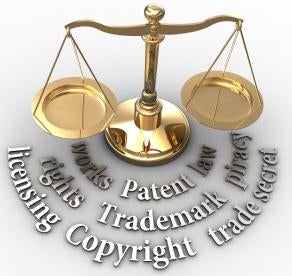On June 23, 2017, in Nantkwest, Inc. v. Matal, No. 2016-1794, slip op. (Fed. Cir. June 23, 2017) (precedential), the Federal Circuit held that the United States Patent and Trademark Office (USPTO) may recover the pro-rata share of the attorneys’ fees it incurs to defend an applicant’s appeal under 35 U.S.C. § 145.
Section 145 provides:
[a]n applicant dissatisfied with the decision of the Patent Trial and Appeal Board . . . may, unless appeal has been taken to the United States Court of Appeals for the Federal Circuit, have remedy by civil action against the Director in the United States District Court for the Eastern District of Virginia . . . . All the expenses of the proceedings shall be paid by the applicant.
35 U.S.C. § 145 (emphasis added). After prevailing at the district court on the merits, the USPTO filed a motion to recover over $110,000 of its fees under the § 145 expense provision, including nearly $80,000 in attorneys’ fees and a little over $30,000 in expert fees. Nantkwest, Inc., slip op. at 3. The district court granted the requested witness’ fees but denied the requested attorneys’ fees, citing the “American Rule” that “litigants pay their own attorneys’ fees, win or lose, unless as statute or contract [specifically and explicitly] provides otherwise. Id. at 3. The district court concluded that the “all expenses” provision was neither sufficiently specific nor explicit enough for the authorization of attorneys’ fees under the Rule. Id. at 3-4.
On appeal, the Federal Circuit initially questioned whether the American Rule was even applicable, given that the § 145 expense provision makes no reference to prevailing parties. Id. at 5. Nevertheless, it concluded that “even under this Rule, the expenses at issue . . . include the USPTO’s attorneys’ fees.” Id. at 6.
Relying on Wright & Miller on Federal Practice and Procedure, Black’s Law Dictionary, and the Supreme Court’s recent decision in Taniguchi v. Kan Pacific Saipan, Ltd., 132 S. Ct. 1997 (2006), the Federal Circuit observed that the term “expenses” generally is understood to include “costs” and “attorneys’ fees.” Id. at 7-10. And it found no merit in the applicant’s contention that the term “expenses” in § 145 was unclear in light of Congress’ enactment of statutory provisions authorizing recovery of “attorneys’ fees” in addition to “expenses” in other contexts. Id. at 9-11. Such usage, the Federal Circuit commented, “cannot be sufficient to dislodge the reasonable and ordinary meaning” of the term “expenses,” especially in the context of § 145 “where Congress explicitly authorized compensation for ‘all expenses of the proceedings.’” Id. at 10-11.
Moreover, the Federal Circuit reasoned, the USPTO “relies on personnel from the Office of the Solicitor” who “received fixed salaries as compensation.” Id. at 12. Because they do not bill individual hours for their work or collect fees from those they represent, the Federal Circuit found that the overhead associated with their work is more precisely characterized as an “expense” to the government than a “fee.” Id.
Finally, the Federal Circuit rejected the applicant’s argument that the USPTO’s attorneys’ fees are not expenses of the proceeding because the USPTO would have to pay the attorneys’ salaries regardless of the lawsuit. Id. at 13-15. The Federal Circuit noted that it and other circuits have awarded fees to salaried employees where litigation requires diversion of resources, and that it could not be “credibly disputed that the USPTO dedicated time and resources of its attorneys to the defense of [the] litigation when it could have otherwise applied those resources to other matters.” Id. at 14-15. Accordingly, the Federal Circuit concluded that “§ 145 entitles the USPTO to compensation for the diversion of its resources in the defense of § 145 appeals.” Id. at 15.
The Federal Circuit’s holding in Nantkwest greatly increases the cost of pursuing a § 145 action in response to an adverse Board decision. As the facts of Nantkwest reveal, the USPTO’s ability to now recover its attorneys’ fees can be the difference between a low five-figure bill and six-figure bill at the conclusion of the proceedings. Those contemplating filing a § 145 action, instead of appealing to the Federal Circuit, will need to carefully evaluate whether incurring that additional expense is justified in the context of their specific circumstances.
Other Notable Decisions – Week of June 23, 2017
Cole Kepro Int’l, LLC v. VSR Indus., Inc., No. 2016-2258 (Fed. Cir. June 19, 2017) (non-precedential): In Cole, the Federal Circuit affirmed a Patent Trial and Appeal Board determination of obviousness in an inter partes review proceeding. In doing so, the Federal Circuit concluded substantial evidence supported the Board’s finding that the patent owner’s “licensing evidence, while entitled to weight, did not overcome [the petitioner’s] prima facie case of obviousness.” That evidence, according to the Federal Circuit, included following: “(1) all of the submitted licenses convey rights beyond the [challenged] patent; (2) most of [the] licenses do not separately apportion the royalty rate for the [challenged] patent; (3) the per-unit royalty amounts ‘appear to be quite small compared to the value of the machine’; and (4) the lump-sum amount of at least one of the licenses is ‘difficult to square with [the patent owner’s] assertion that the total value of each of the licenses exceeded potential litigation costs.’” In addition, the Federal Circuit found the patent owner’s argument that the license agreements were not entered into for the purpose of settling patent infringement litigation was “significantly weakened by one of the submitted licenses, which expressly recites the parties’ wishes to resolve an ongoing patent litigation by entering into the licensing agreement.”
Nexlearn, LLC v. Allen Interactions, Inc., Nos. 2016-2170, 2016-2221 (Fed. Cir. June 19, 2017) (precedential): In Nexlearn, the Federal Circuit affirmed a district court’s dismissal of a patent infringement action for lack of personal jurisdiction. The Federal Circuit concluded that the defendant’s pre-issuance activities directed toward the forum state were “not relevant” to the specific jurisdiction inquiry, reasoning that the plaintiff’s infringement claim did not “proximately arise from these actions” because they did not occur “during the term of the patent.” In addition, the Federal Circuit found that the defendant’s website, which included the forum state in a “dropdown” menu with billing-address information, and two post-issuance communications by the defendant arguably offering to sell the alleged infringing software in the forum were “too attenuated” to establish personal jurisdiction over the defendant.




 i
i

